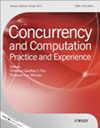Prediction of Carbon Emission Rights Trading Prices Based on the CNN–LSTM Model in the Context of Carbon Peak: Taking Guangdong Province as an Example
Abstract
Carbon emissions are a significant contributor to global warming. As one of the largest carbon emitters in the world, China is committed to establishing a carbon emission trading market to address the challenges posed by climate change. The carbon price is a fundamental component of the carbon financial market. Accurately predicting it can improve environmental quality, reduce energy demand, and promote economic growth. This study uses price data from the Guangdong carbon market as a case study and employs a hybrid model that integrates Convolutional Neural Networks (CNN) and Long Short-Term Memory (LSTM) networks for carbon price forecasting. The findings indicate that: (1) the CNN–LSTM model exhibits optimal predictive performance when the sliding window is set to a size of 5 on the basis of previous carbon price data. (2) By incorporating significant indicator features from the Guangdong pilot carbon price dataset while maintaining a sliding window size of 5, the model achieves superior predictive accuracy, as evidenced by a Goodness of Fit (R2) of 0.8622 and a mean absolute error (MAE) of 0.0228, resulting in the most favorable comprehensive evaluation index. (3) The integration of one-dimensional convolutional layers with LSTM layers in the CNN–LSTM model effectively leverages the strengths of CNNs for local feature extraction and the capabilities of LSTMs for modeling time series data. This approach leads to a substantial improvement in predictive performance compared with alternative models such as Support Vector Machine (SVM), Recurrent Neural Network (RNN), and LSTM.

 求助内容:
求助内容: 应助结果提醒方式:
应助结果提醒方式:


